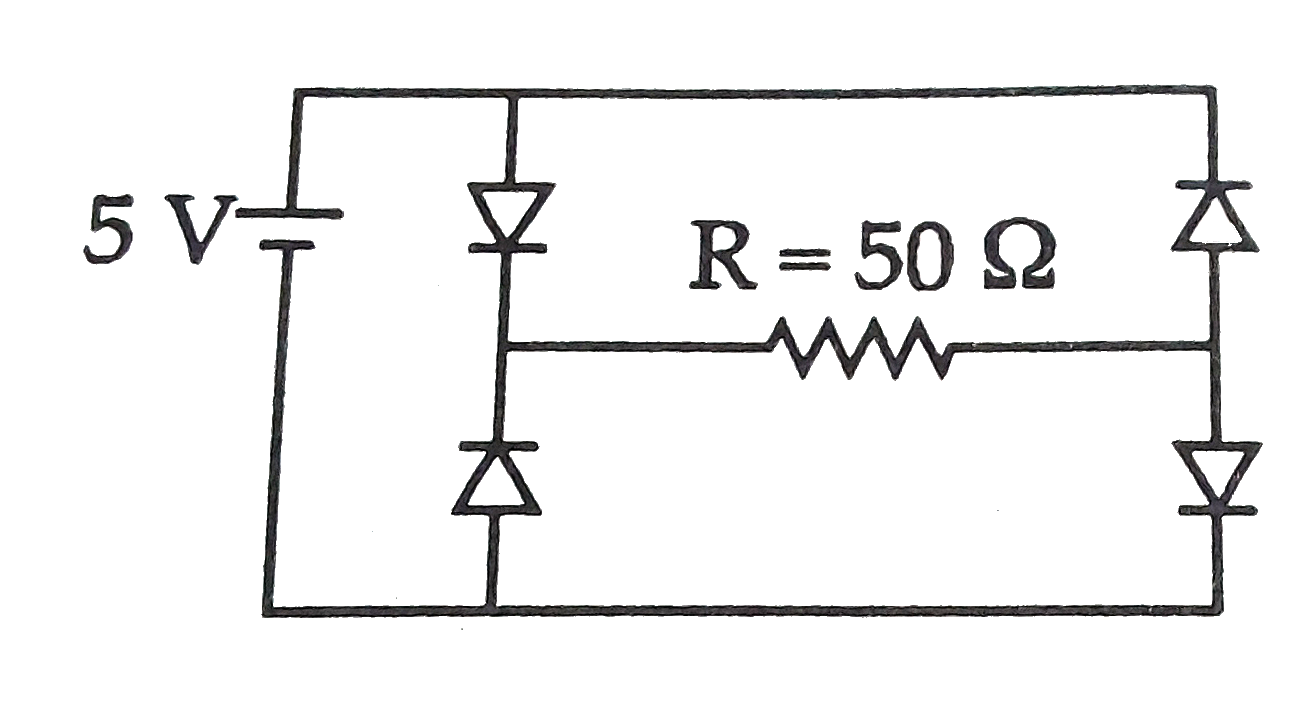In figure given below, assuming the diodes to be ideal

Video Solution
Text Solution
The correct Answer is:B
In the given circuit p-side of p-n junction D1 is connected to lower voltage and n-side of D1 to higher voltage .
Thus D−(1) is reverse biased
The p-side of p-n junction D2 is at higher potential and n-side of D2 is at lower potential .
Therefore D2 is forward biased .
Hence, no current flows through the junction B to A
|
Similar Questions
Knowledge Check
In a figure given alongside assuming the diodes to be ideal
 AD1 is forward biased and D2 is reverse biased and hence, current flows from A to BBD2 is forward biased and D1 is reverse biased and hence, no current flows from B to A and vice-versaCD1 and D2 are both forward biased and hence current flows from A to BDD1 and D2 are both reverse biased and hence no current flows from A to B and vice-versa
AD1 is forward biased and D2 is reverse biased and hence, current flows from A to BBD2 is forward biased and D1 is reverse biased and hence, no current flows from B to A and vice-versaCD1 and D2 are both forward biased and hence current flows from A to BDD1 and D2 are both reverse biased and hence no current flows from A to B and vice-versaIn Figure, assuming the diodes to be ideal,
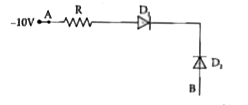 AD1 is forward biased and D2 is reverse biased and hence current flows from A to BBD2 is forward biased and D1 is reverse biased and hence no current flows from B to A and vice versa.CD1 and D2 are both forward biased and hence current flows from A to B.DD1 and D2 are both reverse biased and hence no current flows from A to B and vice versa.
AD1 is forward biased and D2 is reverse biased and hence current flows from A to BBD2 is forward biased and D1 is reverse biased and hence no current flows from B to A and vice versa.CD1 and D2 are both forward biased and hence current flows from A to B.DD1 and D2 are both reverse biased and hence no current flows from A to B and vice versa.In Fig.assuming the diode to be ideal
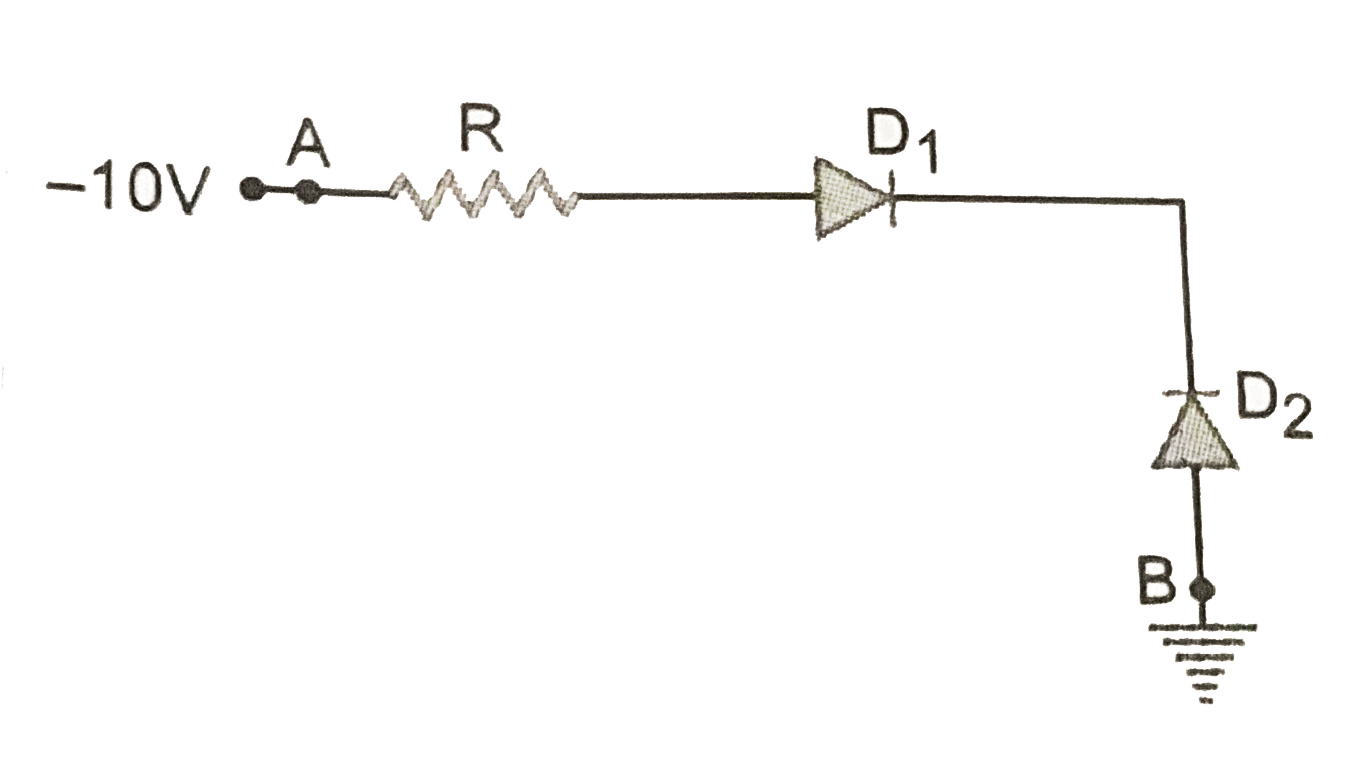 AD1 is forward biased and D2 is reverse biased and hence current flows from A to BBD2 is forward biased and D1 is reverse biased and hence no current flows from B to A and vice versaCD1 and D2 are both forward biased and hence current flows from A to BDD1 and D2 are both reverse biased and hence no current flows from A to B and vice versa
AD1 is forward biased and D2 is reverse biased and hence current flows from A to BBD2 is forward biased and D1 is reverse biased and hence no current flows from B to A and vice versaCD1 and D2 are both forward biased and hence current flows from A to BDD1 and D2 are both reverse biased and hence no current flows from A to B and vice versa
" Four silicon diodes are connected as shows in fig Assuming the diodes to be ideal The current through the resister is "
View SolutionIn figure , assuming the diodes to be ideal ,
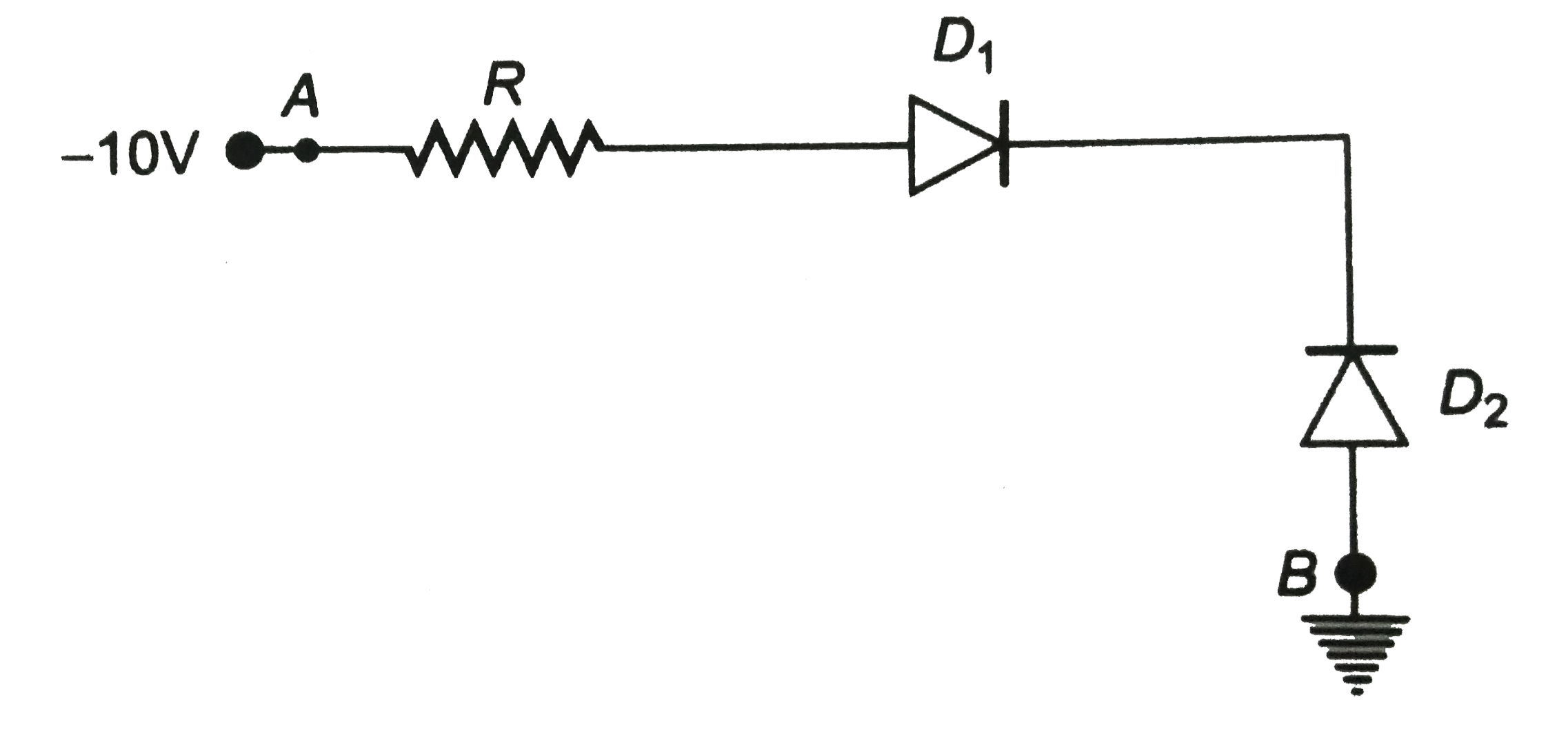
View SolutionIn Fig assuming the diodes to be ideal :
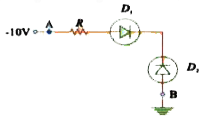
View SolutionThe figure below shows a circuit and its input voltage vi as function of time t.
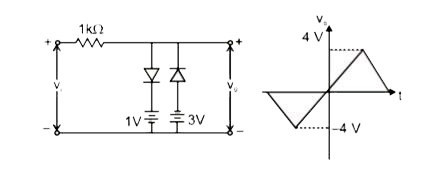
Assuming the diodes to be ideal, which of the following graphs depicts the output voltage v0 as function of time t ?
View SolutionIn the circuit shown below, assume the diode to be ideal. When Vi increases from 2 V to 6 V, the change in the current in (in mA)

View Solution

